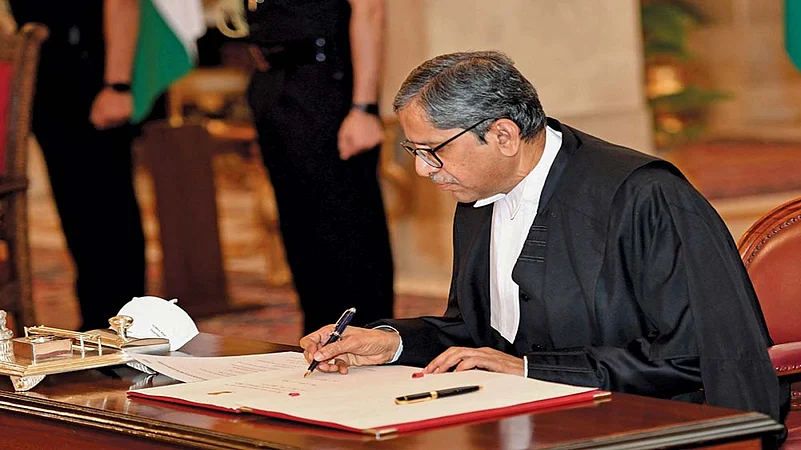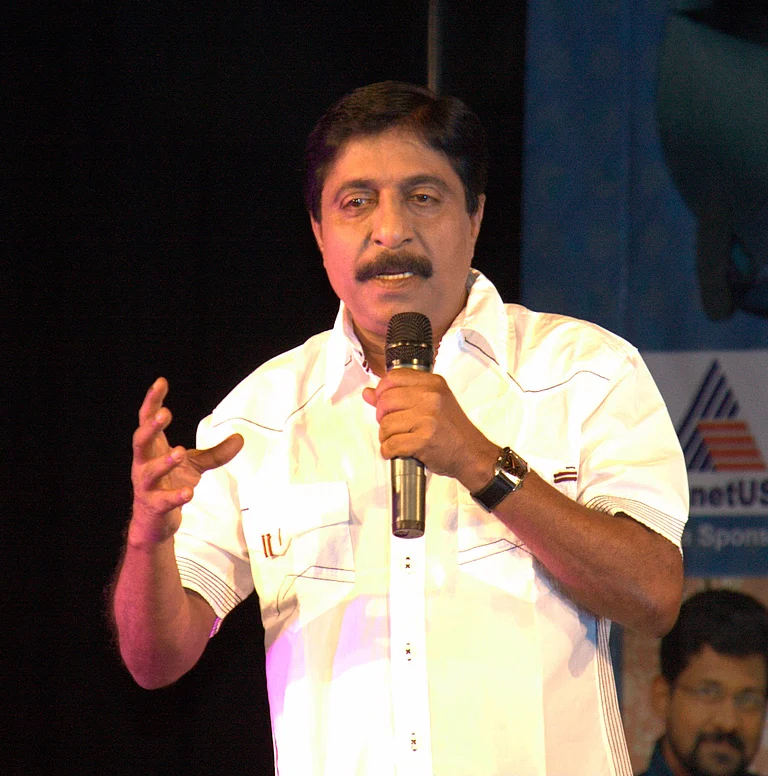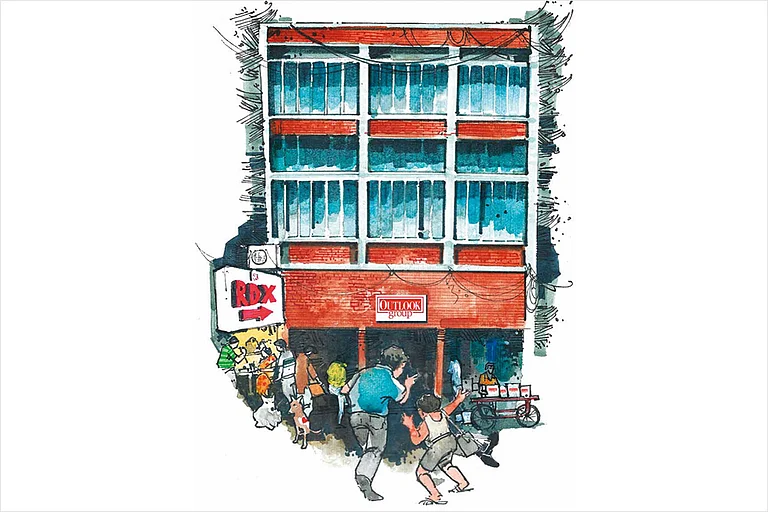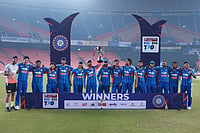The Supreme Court got a new chief justice on April 24, with the swearing in of Justice N.V. Ramana. His appointment would have been mostly unremarkable except for the fact that he is the first Chief Justice of India (CJI) to enter office under a cloud of suspicion after being accused of serious impropriety, by the sitting chief minister of Andhra Pradesh. Other CJIs have had to wait until occupying the high office before facing allegations of impropriety. The fact that an ‘in-house’ inquiry conducted by the Supreme Court has given CJI Ramana a ‘clean chit’ means little since the final report has not been made public.
The cloud of suspicion hanging over CJI Ramana comes at a time when there is an increasing perception among the Bar that the Supreme Court is no longer as independent from the government as it was in the past. The root cause of this perception has been the press conference held by four senior judges of the court on January 12, 2018. At this press conference, the four judges accused the then CJI Dipak Misra of allotting politically sensitive cases to handpicked judges and failing to finalise the Memorandum of Procedure for the appointment of judges. The events that followed the press conference, including the refusal of the vice president of India to admit in the Rajya Sabha a motion to impeach CJI Misra, the manner in which CJI Ranjan Gogoi was nominated to the Rajya Sabha by the President soon after his retirement from the Supreme Court and the disgraceful judgment in the Babri Masjid case have only strengthened the notion that the Supreme Court is being influenced by political pressure. Given this background, it is bad optics for CJI Ramana to not disclose the ‘in-house’ inquiry report, especially since the Supreme Court has held the right to information to be part of the fundamental right to free speech in Article 19(1)(a) of the Constitution. Unless the inquiry report is made publicly available, every judgment of CJI Ramana in favour of the central government will be presumed to have been influenced by the government regardless of the strength of reasoning offered in his judgments. That is the simple truth of the matter in the age of social media.
The second challenge before CJI Ramana is to tackle the current deadlock on the issue of judicial appointments to the Supreme Court and the high courts. A 1994 judgment of the Supreme Court created the collegium system—the top five judges of the Supreme Court make recommendations to the President regarding persons who can be appointed to the Supreme Court and the high courts as judges. While there is little doubt that the judgment leading to the collegium system is an utter fraud on the Constitution, it does seem to have popular legitimacy among the Bar. As per the latest courtroom gossip, there are two deadlocks among the collegium and with the government that have stalled further appointments. The first is over the appointments of Justice Akhil Qureshi, currently the chief justice of Tripura High Court, to the Supreme Court. Justice Qureshi was one of the judges of the Gujarat High Court who ruled in favour of sending Home Minister Amit Shah to prison, when he was an accused in the extrajudicial killing of Sohrabuddin Sheikh. Over the past few years, the central government has apparently blocked the appointment of Justice Qureshi as chief justice of the Gujarat High Court or the Madhya Pradesh High Court, thereby forcing the collegium to appoint him chief justice of the small high court in Tripura. In the ordinary course of events, Justice Qureshi would have easily made it to the Supreme Court, given his stellar reputation and his seniority. Standing fast on the recommendation to appoint Justice Qureshi to the Supreme Court will boost the perception of the court’s independence from the political executive.
The second deadlock is reportedly over the appointment of Justice N.V. Nagarathna. If appointed right now, Justice Nagarathna can become the first female CJI and send out a powerful signal to the world that the Indian judiciary is not an old boy’s club. Given the Supreme Court’s woeful track record on gender representation and sexual harassment, it needs to take concrete steps to signal its seriousness on the issue. In both cases, the decision depends on the collective will of the collegium and not just CJI Ramana, but as head of the institution, the buck ultimately stops with him.
The third challenge before CJI Ramana is to put in place a transparent system for listing of cases before different benches of the Supreme Court. As ‘master of the roster’, it is the CJI’s prerogative to decide which bench of judges hears cases and when. As recently as November last year, the Supreme Court Bar Association raised questions about the manner in which Arnab Goswami’s bail application was listed and heard by the court with unholy haste. Apart from the perception that the rich and powerful get speedy hearings before the Supreme Court, there is also the allegation that the court is unwilling to hear politically sensitive cases such as petitions challenging the constitutionality of the electoral bond scheme, the abrogation of Article 370 and the legality of actions leading to demonetisation. Facts will show that this is not a recent or unique issue with the present Supreme Court. There are several older cases that were referred to constitutional benches and have been pending for 10 to 20 years just because incumbent CJIs have not constituted benches to hear those cases. This is a problem that can be fixed easily by putting in place a system of rules that lays out clear criteria for the listing of cases. The highest preference for early hearings must be given to cases of personal liberty, violation of fundamental rights and constitutionality of legislation. Until such a system is put in place, the Supreme Court will keep facing allegations of nepotism if not corruption, every time a case jumps the queue.
The last challenge for CJI Ramana is to tackle the long-standing issue of judicial transparency. Thanks to the pandemic, the court has been forced to embrace virtual hearings. Live-streaming of these proceedings is the next logical step, but that has not happened despite a judicial order by three judges of the Supreme Court in 2018 in favour of live-streaming. If the court is unwilling to go down the route of live-streaming, it must at the very least offer the public with verbatim transcripts of proceedings. Allowing the public a chance to peer into the court’s proceedings will greatly boost its legitimacy in the eyes of public opinion and improve the quality of reporting of proceedings. The other issue of transparency pertains to the working of the collegium. We have no idea on the list of judges being recommended by collegiums of the high courts and the reasons or basis of appointment or rejection of these names. As the head of the Supreme Court, it is the prerogative of the CJI to force transparency on the workings of the Supreme Court collegium.
There is much riding on CJI Ramana’s tenure. The Supreme Court’s reputation has taken a bashing over the tenure of the last four CJIs. The damage, however, is not irreparable. A judge willing to demonstrate the courage required to stay true to the Indian Constitution can still rescue the court and the office of the chief justice.
The writer is a Lawyer based in Bangalore





















